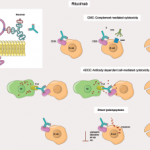Patients with antineutrophil cytoplasmic antibody–associated vasculitis (AAV), including granulomatosis with polyangiitis (GPA) and microscopic polyangiitis (MPA), are often prescribed high doses of glucocorticoids and immunosuppressive medication, such as rituximab. Glucocorticoid treatment is commonly associated with weight gain. Despite the well-established link between glucocorticoid use and cardiovascular risk, weight gain is not always an adverse event due to the risks of weight loss associated with increased catabolic activity experienced by patients with these inflammatory conditions.
“The ability to classify increased BMI [body mass index] (e.g., weight gain) accurately as either an adverse event related to glucocorticoid exposure or a positive outcome reflecting improved disease activity is, therefore, important in studies investigating glucocorticoid-sparing strategies,” write Zachary S. Wallace, MD, and colleagues from Massachusetts General Hospital in Boston in their latest research, published in the July 2017 issue of Arthritis Care & Research.
Only one previous study, the Wegener’s Granulomatosis Etanercept Trial, has examined the relationship between AAV treatment and changes to patient BMI. It found weight gain was not associated with glucocorticoid exposure. In their latest research, Dr. Wallace and colleagues set out to replicate these findings, as well as investigate the relationship between increases in BMI and improved disease control.
The researchers used data from the Rituximab in ANCA-Associated Vasculitis (RAVE) trial, which included 197 participants with antineutrophil cytoplasmic antibody positivity with GPA or MPA and severe disease. In the RAVE trial, patients were randomized into two groups: one treated with cyclophosphamide and one with rituximab. Both groups received the same glucocorticoid protocol. Throughout the trial, glucocorticoid use, BMI and disease activity were measured regularly between baseline and 18 months.
The Results
Researchers successfully replicated the original clinical study, finding that increases in BMI are multifactorial and associated with improvements in disease activity, cumulative glucocorticoid exposure and randomization to rituximab. The study also demonstrated that “when a more granular analysis is conducted, changes in BMI during induction treatment do in fact have complex associations with glucocorticoid exposure, disease activity and randomization to rituximab,” write the authors.
The most significant increase in BMI occurred during the first six months. The mean BMI (plus or minus the standard deviation [SD]) increased by 1.1 ± 2.2 kg/m2 (P<0.001 compared with baseline). At 12 and 18 months, BMI did not significantly change. When the researchers applied the same methodologies as the original trial, conducted a multivariate linear regression analysis and adjusted for potential confounders, they found no significant association between the quantity of glucocorticoids administered and change in BMI.

